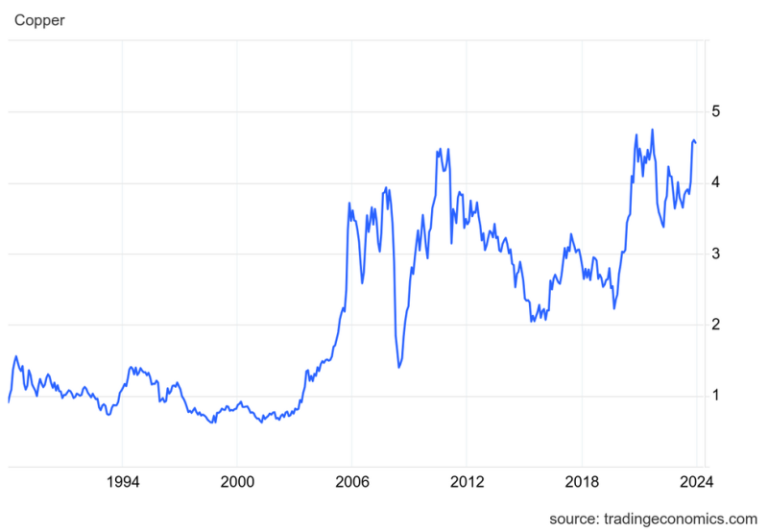As the demand for copper continues to rise globally, its historical prices have fluctuated over the years, reflecting various economic and geopolitical factors. Copper, known as Dr. Copper due to its reputation as a reliable indicator of economic health, has a long and storied history as a valuable commodity.
The Industrial Revolution marked a significant turning point for copper prices, as the metal’s versatility and conductivity made it an essential component for various machinery and infrastructure. The increasing use of electricity further propelled the demand for copper, leading to spikes in prices during periods of rapid industrialization.
Throughout the 20th century, copper prices experienced significant volatility, influenced by factors such as wars, economic recessions, and technological advancements. The outbreak of World War I, the Great Depression, and World War II all had profound effects on copper prices, with sharp declines followed by rapid recoveries as global economies rebuilt and expanded.
The latter half of the 20th century saw a steady increase in copper prices as developing countries like China emerged as major consumers of the metal. The construction and manufacturing sectors drove demand, while speculative trading and financial crises added further fluctuations to copper prices.
In the early 21st century, copper prices reached historic highs, driven by the rapid industrialization of emerging economies and increased demand for infrastructure and electronics. However, the global financial crisis of 2008 led to a sharp decline in copper prices as demand waned amidst economic uncertainty.
In recent years, copper prices have shown resilience despite ongoing economic challenges and geopolitical tensions. The metal’s crucial role in renewable energy technologies, such as electric vehicles and solar panels, has sparked renewed interest and investment, driving prices higher.
Looking ahead to 2024 and beyond, experts predict continued volatility in copper prices, with factors like supply chain disruptions, currency fluctuations, and shifting market dynamics influencing price movements. As the world transitions towards a greener economy, the demand for copper is expected to remain strong, presenting both opportunities and challenges for investors and industry players alike.
In conclusion, the historical trajectory of copper prices reflects the complex interplay of economic, technological, and geopolitical factors that have shaped the metal’s value over time. While past trends can provide valuable insights, the future of copper prices will likely be influenced by a new set of challenges and opportunities as the world economy evolves.



